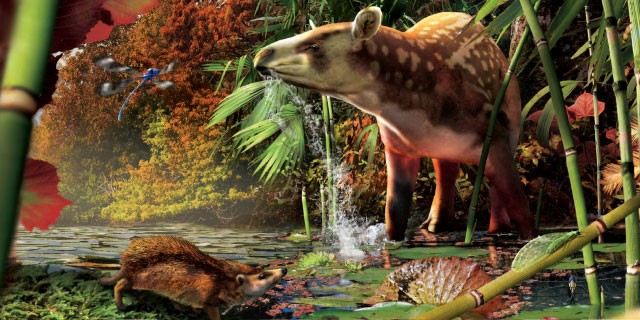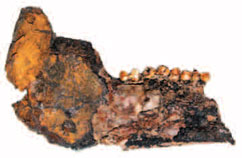Ancient Animals: Researcher Discovers Two New Mammals


Dr. David Greenwood
Biology professor Dr. David Greenwood has played a pivotal role in discovering two new prehistoric mammals that roamed North America 52 million years ago.
Dr. Greenwood made the discoveries while leading fossil digs in Driftwood Canyon Provincial Park, near Smithers, British Columbia, in 2010 and 2011.
A plant and ancient climate specialist, Dr. Greenwood called in fossil mammal experts Drs. Jaelyn Eberle from the University of Colorado, and Natalia Rybczynski from the Canadian Museum of Nature, to identify the ancient jawbones.

The jawbone discovered by Dr. Greenwood. Photo sourced by Dr. Jaeyln J. Eberle of the University of Colorado at Boulder.
“The two species we have discovered are an ancient tapir relative that would have been about the size of a large dog, and a hedgehog relative that would have been smaller than a mouse,” says Dr. Greenwood. “This is remarkable because very few fossil mammals of this geological age have been described before in Canada.”
The fossil discoveries are also significant because the early Eocene epoch when these mammals lived marked the height of prehistoric global warming, a period involving significant reorganization of the world’s plant and animal life.
“We can gain insight into how the Earth was coping with a problem then that’s re-emerging now.”
“We can gain insight into how the Earth was coping with a problem then that’s re-emerging now,” says Dr. Greenwood, who used fossils to reconstruct the forest setting and climate where the ancient animals lived. Dr. Greenwood’s important finds have been published as the cover story in the July, 2014 edition of the US-based Journal of Vertebrate Paleontology.
